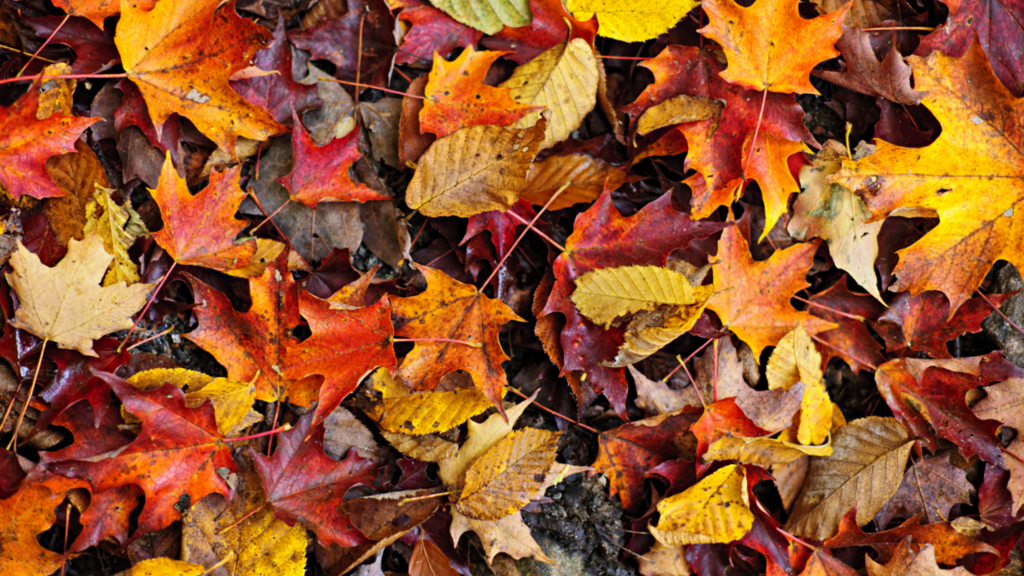We’re falling into a beautiful time of the year as deciduous trees paint the horizon with warm hues of reds, yellows, and oranges. The driving forces for this colorful transition are decreased daylight and lower temperatures. Plants rely on sunlight to convert energy into food through a process called photosynthesis. A key component of this process is a pigment in leaf cells called chlorophyll, which functions to trap light energy and provide leaves their green color.
During the warmer months, sunlight is abundant, but as the days become shorter, sunlight is scarce. This decrease in sunlight causes the trees to reduce their production of chlorophyll to conserve energy. As the chlorophyll breaks down, so does the green coloration that overrides other pigments occurring in leaves. Pigments such as carotenoids exhibit oranges, while xanthophylls express yellows, and anthocyanins create the reds and purples. These colors are revealed in leaves as the chlorophyll fades. Trees will then weaken their leaves at the stem to shed them.
We encourage you to visit the Anniston Museums and Gardens’ this autumn and enjoy the surrounding Treasure Forest. The woods feature an array of native trees and shrubs morphing into a blaze of colors while the tropical gardens are lush with greens and bright colors.

